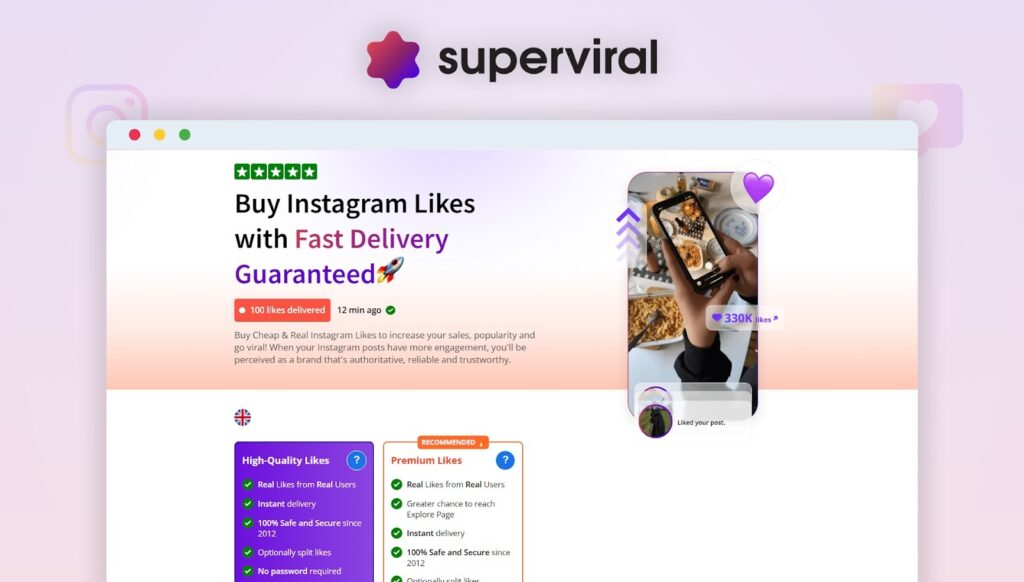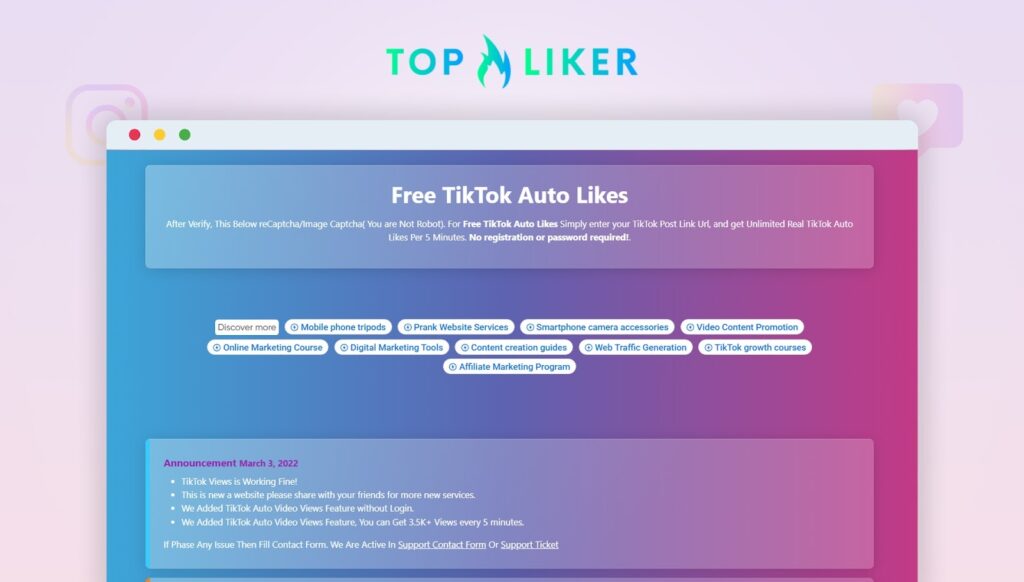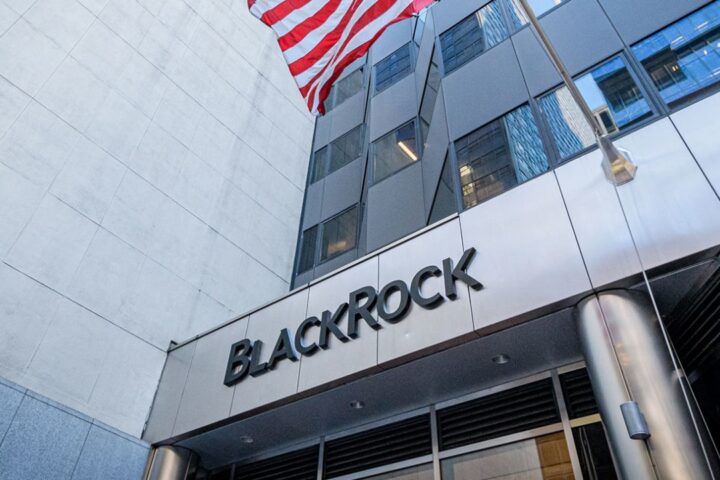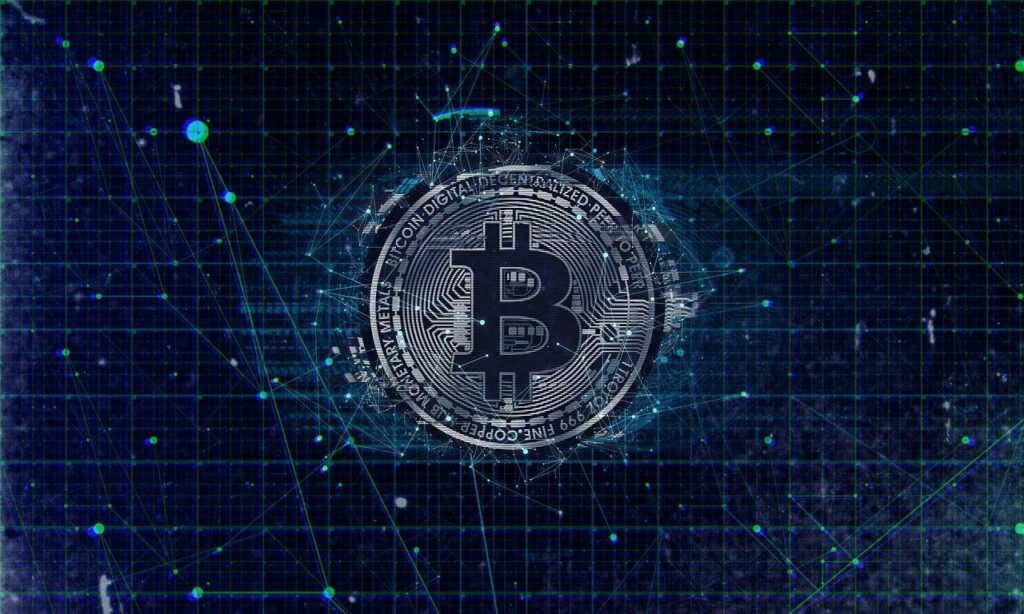BlackRock’s head of digital assets, Robbie Mitchnick, has suggested that most major asset managers are not viewing Bitcoin through the lens of day-to-day payments when evaluating its role in portfolios.
In a recent podcast appearance, Mitchnick emphasized that institutions are largely focused on Bitcoin’s store-of-value appeal rather than its potential as a global payment technology.
“I think for us, and most of our clients today, they’re not really underwriting to that global payment network case,” Mitchnick said.
“That’s sort of maybe out-of-the-money-option-value upside,” he added.
The comments highlight a continued divide between the vision of Bitcoin as digital cash and the practical considerations driving institutional adoption today.
Focus Remains on the Digital Gold Narrative
Mitchnick explained that the speculative nature of Bitcoin’s payment utility means investors remain more committed to the asset’s “digital gold” narrative.
He said Bitcoin may still evolve into a widely used payment tool, but that scenario involves more uncertainty than its role as a store of value.
He described the payments thesis as “a little bit more speculative,” adding that institutions prioritize the resilience and long-term investment use case rather than transactional adoption.
Significant Scaling Needed for Bitcoin Payments
According to Mitchnick, substantial technical progress would be required before Bitcoin could realistically compete with traditional payment networks.
“There’s a lot that needs to happen in terms of Bitcoin scaling, Lightning, and otherwise to make that possible,” he said.
The comments echo broader industry concerns around the future of Bitcoin scaling solutions.
Earlier analyses, including an August 2024 report from Galaxy Research, warned that many Bitcoin layer-2 networks — especially “rollups” — may struggle over the long term, despite current enthusiasm around faster and cheaper transaction layers.
Other blockchain networks are being used for a variety of real-world purposes, including sending payments and powering online bingo sites.
Stablecoins Surging Ahead in Payments Sector
While Bitcoin’s payment future remains uncertain, Mitchnick said stablecoins have already demonstrated clear adoption.
He described the sector as “hugely successful,” noting that stablecoins offer “massive product market fit as a payment instrument as a way of moving value around efficiently.”
Mitchnick said stablecoins are poised to grow well beyond their existing uses in trading and decentralized finance.
“Stablecoins have the potential to greatly expand where they are used today, going beyond just the sort of crypto trading ecosystem and DeFi to actually doing retail remittance payments, corporate, multinational, cross-border transactions, and capital market settlement activity,” he said.
He added that while Bitcoin could compete in certain payment categories — such as retail remittances — institutional investors still view that scenario as uncertain.
“At some point it is possible, but it’s a more speculative thing to underwrite at this point,” he said.
Stablecoin Momentum Influencing Long-Term Bitcoin Forecasts
The rapid growth of stablecoins has already influenced how analysts model Bitcoin’s long-term value.
ARK Invest CEO Cathie Wood recently said that the sector’s accelerating expansion forced her to revise her earlier projections for Bitcoin’s 2030 valuation.
“Stablecoins are usurping part of the role that we thought that Bitcoin would play,” she said.
Wood previously expected Bitcoin to hit $1.5 million by the end of the decade, but now believes reducing that estimate by roughly $300,000 may be justified given stablecoin adoption.
“I think emerging markets are huge in this regard and we’re starting to see institutions in the United States focused on new payment rails,” she said.
Industry Leaders Expect Full Transition to On-Chain Money
The trend toward stablecoin-based payment systems appears to have strong support among industry builders.
Tether co-founder Reeve Collins told Cointelegraph in September that he expects “all currency” to transition into stablecoin form by 2030, reflecting a broader shift toward on-chain financial infrastructure.
That outlook contrasts with the more cautious stance on Bitcoin’s payment potential, underscoring how digital assets may take on distinct roles within future financial systems.
Pump.fun co-founder Sapijiju has pushed back strongly against accusations that the Solana-based project cashed out more than $436 million in stablecoins, calling the claims “complete misinformation.”
The allegations originated from blockchain analytics firm Lookonchain, whose report suggested the project may have moved large sums of USDC to exchange wallets.
Sapijiju denied the interpretation in an X post, clarifying that none of the transferred stablecoins had been sold.
He said the USDC came from the PUMP token’s initial coin offering and that the movement reflected an internal treasury process rather than a liquidation event.
“What’s happening is a part of Pump’s treasury management, where USDC from the $PUMP ICO has been transferred into different wallets so the company’s runway can be reinvested into the business,” Sapijiju said.
“Pump has never directly worked with Circle.”
Treasury Processes or Sell-Off? Dispute Intensifies
Treasury management typically refers to how a crypto project organizes capital from revenue, reserves and crowdfunding.
How these funds are moved, stored and allocated can vary widely, and transfers do not always indicate selling pressure.
The Pump.fun founder argued that the redistributed funds were part of routine internal planning.
However, Lookonchain’s report carried considerable weight in the crypto community.
The firm claimed that since mid-October, wallets linked to Pump.fun had transferred $436 million in USDC to Kraken, sparking speculation of a major cash-out.
The timing raised additional suspicion because the transfers occurred as Pump.fun’s revenue fell sharply.
According to DefiLlama, monthly revenue dropped to $27.3 million in November, the lowest since July.
Mixed Analyst Reactions and Further Data Insights
Despite the controversy, data from DefiLlama, Arkham and Lookonchain showed that Pump.fun-associated wallets still held over $855 million in stablecoins and approximately $211 million in Solana.
Those findings reinforced arguments that the transfers did not represent an exit or wholesale liquidation.
Yet not all analysts were convinced.
Nicolai Sondergaard of Nansen suggested that the transfers could signal preparations for future selling, while EmberCN argued that the funds may have come from institutional private placements rather than market dumps.
Community Divided Over Motives and Transparency
The Pump.fun community expressed sharply divided reactions.
Some users accepted the treasury explanation, while others argued that the statement raised more concerns than it resolved.
X user Voss criticized conflicting elements in the co-founder’s post, writing: “Definitely didn’t just contradict yourself on a post you had 10 hrs to respond to.”
Another user, EthSheepwhale, dismissed the clarification and blamed Pump.fun for “price manipulation via airdrops,” pointing to the token’s continued decline.
PUMP traded at $0.002714, down 32% from its ICO price of $0.004, and nearly 70% below its September peak of $0.0085, according to CoinGecko data.
Others took a more neutral stance.
Some argued the focus should be on transparency regarding reserves rather than internal wallet flows.
User Matty.Sol defended the project’s autonomy, writing, “Nothing wrong even if it’s true. It’s your own revenue tho.”
Another user, Oga NFT, said treasury movements were common after ICOs and that the real question was whether stablecoin reserves properly backed the circulating supply.
Calls for Audits Grow as Industry Scrutinizes the Case
The dispute has sparked renewed calls for third-party audits and real-time reserve disclosures, especially for large projects operating in the memecoin sector.
For now, Pump.fun maintains that its treasury actions have been misinterpreted, while Lookonchain’s analytics continue to influence public perception.
As the debate continues, the controversy highlights the growing tension between transparency expectations and treasury autonomy within the crypto industry.
Bitcoin investor Strategy is facing scrutiny after a steep decline in its share price this year, but long-term data shows the company’s Bitcoin-driven model remains far more resilient than short-term charts suggest.
Google Finance data shows Strategy’s stock has dropped nearly 60% over the past year and more than 40% year-to-date.
The stock was trading near $300 in October but has since fallen to around $170.
Despite Declines, Bitcoin Holdings Still in Profit
Some investors have interpreted the slump as evidence that Strategy’s approach has been “exposed.”
However, BitcoinTreasuries.NET data shows the company acquired its Bitcoin at an average cost of $74,430.
With Bitcoin trading near $86,000, Strategy remains up about 16% on its overall Bitcoin purchases.
The company’s long-term stock performance also paints a different picture.
Over the past five years, Strategy shares have climbed more than 500%.
For comparison, Apple gained 130% over the same period, while Microsoft increased by 120%.
Even over two years, Strategy’s stock rose 226%, outperforming Apple’s 43% and Microsoft’s 25%.
Why Investors Are Shorting Strategy
The recent price decline may have less to do with Bitcoin’s fundamentals and more to do with how institutional investors hedge their crypto exposure.
In a CNBC interview, BitMine chairman Tom Lee said Strategy has become the most convenient vehicle for hedging Bitcoin.
“Someone can use MicroStrategy’s options chain, which is so liquid, to hedge all of their crypto,” he said. “The only convenient way to hedge someone’s long is to short MicroStrategy or buy puts.”
This dynamic has effectively turned Strategy into a pressure valve for the broader crypto market, absorbing volatility, hedges and short positions that may not reflect its underlying business strategy.
Strategy Expands Its Bitcoin Holdings
Despite the turbulent market, Strategy continues building its Bitcoin treasury.
Chairman Michael Saylor reaffirmed his commitment to the company’s approach, writing on X that he “won’t back down.”
On Nov. 17, the company announced the purchase of 8,178 BTC for $835.6 million.
The acquisition — significantly larger than its typical weekly purchases — brought Strategy’s total holdings to 649,870 BTC, valued at nearly $56 billion.
Liquidity Slowdown Adds to Market Pressure
On Nov. 6, crypto market-maker Wintermute attributed recent market weakness to slowing liquidity flows across stablecoins, exchange-traded funds and digital asset treasuries.
The firm said inflows in all three areas had flattened, contributing to widespread price pressure.
Data from DefiLlama shows digital asset treasury inflows fell from almost $11 billion in September to just $2 billion in October — an 80% decline following the liquidation of around $20 billion in crypto positions.
Inflows decreased further in November, reaching about $500 million as of Monday, marking a 75% drop from October.
Despite these conditions, Strategy’s long-term performance continues to outpace major tech benchmarks, underscoring the company’s conviction in Bitcoin even amid near-term turbulence.
Concerns about deeper Bitcoin price declines are growing after several prominent long-term holders began offloading major portions of their holdings.
Gold investor and economist Peter Schiff believes these moves signal a structural shift in the market that could amplify future volatility.
He argued over the weekend that Bitcoin is “finally having its IPO moment,” claiming the market has matured enough for early adopters to exit with significant liquidity.
“This much Bitcoin moving from strong to weak hands not only increases the float, but also means future selloffs will be bigger,” Schiff said.
Long-Term Holders Increase Selling Activity
Fresh blockchain data shows that whales and other long-established Bitcoin holders sold more than 400,000 BTC throughout October.
That level of selling contributed to meaningful downward pressure and pushed Bitcoin’s price below the $85,000 mark.
The cryptocurrency market has been split in recent weeks, with some analysts expecting the bull cycle to resume once liquidity conditions improve, while others warn that these movements may be early signs of a broader bearish reversal.
Exchange inflows, which track the amount of Bitcoin being sent to trading platforms, remain elevated and indicate that additional selling could be underway.
Prominent Investors Exit Positions Amid Market Uncertainty
Notable early holder Owen Gunden became one of the most significant sellers this cycle after liquidating his entire 11,000 BTC position across October and November.
The stash, valued at approximately $1.3 billion, was accumulated during the earliest stages of Bitcoin’s development.
His exit was followed by another high-profile sale from Robert Kiyosaki, the “Rich Dad, Poor Dad” author and long-time Bitcoin supporter.
Kiyosaki disclosed on Friday that he sold all of his Bitcoin holdings, worth around $2.25 million.
He explained that he originally bought Bitcoin at approximately $6,000 and decided to take profits after the asset reached the $90,000 range.
According to Kiyosaki, the capital will now be redirected into income-producing ventures, though he stressed that he remains optimistic in the long term.
“I am still very bullish and optimistic on Bitcoin and will begin acquiring more with my positive cash flow,” he said.
Analysts Identify Key Drivers Behind the Price Decline
Market analysts at crypto exchange Bitfinex attribute the latest correction to two primary catalysts.
The first is the wave of large-scale selling from long-term holders seeking to lock in profits.
The second is heightened leverage in derivatives markets, which has led to liquidations that further intensified downward momentum.
Despite the short-term pressure, Bitfinex maintains that Bitcoin’s underlying fundamentals remain strong.
Institutional interest continues to increase, and analysts expect professional investors to keep accumulating BTC as part of long-term portfolio strategies.
Retail Investors May Struggle to Withstand Volatility
While institutions may continue building positions during market weakness, retail investors could amplify the next downturn.
Vineet Budki, CEO of venture firm Sigma Capital, said many retail participants lack conviction in the asset during periods of stress.
He warned that this behaviour could create extreme volatility if the market enters a new bearish phase.
Budki believes that retail selling could ultimately trigger an estimated 70% price decline in the next major bear cycle.
According to him, this dynamic—combined with the recent migration of Bitcoin from long-term holders to newer, less resilient market participants—may set the stage for a more dramatic correction than previous cycles.
Solana’s Uncertain Future
Solana has also suffered during the broader crypto market sell-off in recent weeks. However, many analysts remain bullish on SOL and have been accumulating at these lower prices.
Furthermore, the Solana blockchain is continuing to be used to transactions and Dapps. Those curious are Solana casinos can read analysis on Esports Insider and learn how Solana is powering many emerging digital sectors.
Market Braces for Potentially Wider Price Swings
Bitcoin’s recent movements highlight a growing divergence between long-term conviction holders and short-term participants seeking liquidity.
As early adopters exit with substantial profits and retail investors prepare for further volatility, analysts caution that the market may be entering a phase where price swings become even more pronounced.
While institutional inflows offer some stability, the broader market appears increasingly sensitive to selling events and macroeconomic shifts.
For now, traders continue to watch exchange inflows, whale behavior, and derivatives market positioning for signals on whether the selling pressure will ease or intensify in the weeks ahead.
Grayscale has described Chainlink as a central force in the next major phase of blockchain adoption, calling the project the “critical connective tissue” that links decentralized systems with established financial infrastructure.
In a recent report, the asset manager said Chainlink’s expanding suite of tools positions it as foundational middleware for tokenization, cross-chain interoperability and applications that rely on real-world data.
The firm argued that Chainlink’s capabilities now stretch far beyond providing oracle feeds.
“A more accurate description of Chainlink today would be modular middleware that lets on-chain applications safely use off-chain data, interact across blockchains, and meet enterprise-grade compliance needs,” Grayscale wrote.
The report added that this broad utility has pushed LINK into the top tier of non-layer-1 crypto assets by market capitalization, excluding stablecoins.
Tokenization Seen as Chainlink’s Biggest Opportunity
Grayscale noted that tokenization remains the clearest area where Chainlink’s value becomes evident.
Most traditional assets are still recorded on centralized ledgers, meaning they must be tokenized and connected to external data before they can operate in a programmable blockchain environment.
“We expect Chainlink to play a central role orchestrating the process of tokenization, and it has announced a variety of partnerships, including with S&P Global and FTSE/Russel, that should help it do so,” the report continued.
The market for tokenized assets has expanded sharply, rising from $5 billion to more than $35.6 billion since early 2023, according to data from RWA.xyz.
Banks, Asset Managers and Chainlink Complete Cross-Chain Settlement Pilot
Chainlink’s technology has already been used in early tokenization pilots involving major institutions.
In June, Chainlink, JPMorgan’s Kinexys network and Ondo Finance carried out a cross-chain delivery-versus-payment settlement between a permissioned payment network and a public blockchain test environment.
The pilot connected JPMorgan’s Kinexys Digital Payments network with Ondo Chain’s testnet for tokenized real-world assets.
Using the Chainlink Runtime Environment as the coordination layer, the test successfully exchanged Ondo’s OUSG tokenized US Treasurys fund for fiat settlement without either asset leaving its native chain.
Every trader has asked the same question at some point: “What’s the best option strategy for this stock right now?” Option Samurai’s Analyzer feature gives you a direct, data-driven answer. Instead of running separate scans or manually testing trades, you can define a stock scenario – and the Analyzer will find the optimal strategy automatically.
Whether you’re expecting a rally, a pullback, or range-bound action, this tool compares every supported strategy side by side, calculating expected value, probability of profit, and return using real options data.
Define Your Stock Scenario
Start by entering your ticker, price target, and date, like this:

You can choose between directional or range-based targets, such as:
- Above or Below a certain price
- Between two price levels
- Outside a range
As you input your scenario, a chart updates showing recent price action and the target range you’re planning for. This makes it easier to visualize your thesis before running the analysis.
Let the Analyzer Do the Work
Once you define your scenario, Option Samurai uses its next-gen screening options tools to scan all supported strategies – calls, puts, spreads, condors, covered calls, and more – and calculates which one offers the best balance between expected return and probability of profit.
Each strategy appears on its own card, showing:
- Expected P/L and risk (calculated with a Monte Carlo simulation)
- Probability of profit (from the Black–Scholes model)
- Return on risk and breakeven levels
- A P&L chart with your target, breakeven, and expiration lines clearly marked
You can even slide between prioritizing maximum return or maximum probability of profit – letting you tailor results to your own risk profile.
Hover over the chart to compare different trades or even benchmark them against a simple buy & hold position.
Explore Related Scans and Saved Ideas
Below the main results, you’ll find two additional tabs:
- Saved Scans: Lists all the custom scans where your ticker already appears – helpful if you’ve found setups for it before.
- Predefined Scans: Shows all the built-in scans that currently include that stock.
Both are clickable, so you can jump directly from the Analyzer into the screener for deeper filtering or customization.
This feature is especially useful when you’ve analyzed a specific stock and want to see how it also fits across different strategies in your saved workflows.
Bonus: Fine-Tune Advanced Settings
For traders who like precision, the Analyzer includes advanced simulation controls to adapt results to your style:
- Include unbalanced spreads – expands the search to asymmetrical iron condors or butterflies.
- Bid/ask level – switch between mid or conservative pricing.
- Volatility source – use implied, realized, or custom volatility.
- Drift – simulate bullish or bearish directional bias, or link to the risk-free rate automatically.
These settings allow you to test realistic market conditions instead of textbook ones – especially valuable if you trade events or short-term volatility.
Turn Analysis into Action
Once you’ve found your preferred trade, click “Trade” to open it directly in your Trade Log or send it to your connected broker.
You can tweak strikes, expiration, or quantity – and instantly see how the expected value and probability metrics update. It’s the fastest way to go from idea to execution using real data and clearly defined risk.
Final Thoughts: From Scenario to Strategy in One Click
Option Samurai’s Analyzer takes the guesswork out of options strategy selection.
By running Monte Carlo simulations and comparing every possible trade side by side, it helps you find the most efficient strategy for your price outlook – long, short, or neutral.
Instead of asking “Which strategy should I use?” you’ll know exactly which one fits your scenario, risk tolerance, and timeframe.
Start your free trial today (no credit card required) and discover the most effective option strategy for any stock, any outlook, and any market condition – instantly.
Danielle Sassoon, one of the U.S. attorneys involved in prosecuting former FTX CEO Sam Bankman-Fried, testified Thursday in a Manhattan court amid allegations tied to a deal made with ex-FTX executive Ryan Salame.
The hearing, held in the U.S. District Court for the Southern District of New York, centered on whether prosecutors had improperly induced Salame’s guilty plea — and whether Michelle Bond, his then-girlfriend, was promised that she would not be charged.
Sassoon was asked about her role in Salame’s guilty plea, which resulted in a sentence of more than seven years in prison. According to court papers, her team indicated they would “probably not continue to investigate [Salame’s] conduct” if he pleaded guilty.
Bond’s legal team argues that this statement effectively pressured Salame into pleading guilty so that she would avoid prosecution. Bond faces campaign finance charges related to a $400,000 payment allegedly made via FTX funds, which her attorneys describe as part of a “sham consulting agreement.”
During her testimony, Sassoon struck back at the idea that she offered any sort of deal. “I’m not in the business of gotcha or tricking people into pleading guilty,” she declared.
Sassoon also suggested that Salame’s lawyers used the notion of non-prosecution of Bond as a “negotiating tactic,” rather than a genuine promise. She said, “if the lawyers truly believed it was a credible claim, they would have made it directly to me.”
Bond has pleaded not guilty to counts including conspiracy to make unlawful campaign contributions, receiving excessive contributions, and acting as a conduit for funds.
The hearing continues to draw attention because Bond is one of the last remaining defendants connected to the criminal fallout from FTX’s collapse in November 2022.
Salame, for his part, began serving his sentence in October 2024. Other former FTX executives — including Caroline Ellison, Nishad Singh, and Gary Wang — have also pleaded guilty; the latter two received time-served sentences.
Sam Bankman-Freid, meanwhile, remains incarcerated after being convicted and sentenced to 25 years in prison in August 2023.
Bond’s lawyers are seeking dismissal of her charges, arguing that prosecutors improperly leveraged Salame’s plea to bring criminal liability against her.
In 2025, Instagram has quietly become one of the most important visibility channels for Web3 creators, crypto educators, NFT artists, and blockchain brands. It’s no longer just a social platform — it’s a trust engine.
In a space where credibility determines whether people invest, mint, or join a community, engagement tools have become a key part of building digital reputation. The right like-tools help crypto pages amplify authority, validate social proof, and position themselves competitively in an attention-driven ecosystem.
Below are the platforms crypto creators consistently rely on to strengthen legitimacy, increase reach, and support long-term community growth
Summary: 5 Top-Rated Services for Instagram Likes
- Superviral – Real likes with fast delivery and high retention
- Regsocial – Smart targeting with optional gradual delivery
- TokoLikes – Unique packages tailored to content creators
- ViralHQ – Multi-platform boosting with solid analytics
- MediaMister – Longstanding service with deep customization
1. Superviral – Fast Likes That Don’t Look Bought

Superviral has become the go-to for creators who want fast, high-quality likes that actually help visibility, not hurt it. What separates it from the pack is how real the engagement looks — the likes come from active, authentic-looking profiles that blend into your existing stats.
Superviral doesn’t ask for your login, supports niche-based targeting, and delivers likes within minutes of posting. Whether you’re trying to test a new content type or kickstart a campaign, it’s quick, clean, and safe.
A hidden perk? Many creators use Superviral for boosting not just new content, but old posts that need reviving. It’s a great tactic when trying to increase reach on evergreen content or get older carousel posts back into circulation.
Crypto educators and project pages often use this strategy to revive important announcement posts or keep key educational threads circulating during token updates.
Why people love it:
- Instant delivery with real users only
- No password needed; fast checkout
- Built-in targeting for niche and content type
- Great for boosting both new and old posts
- 42% average boost in post reach (internal stats)
⭐ Rating: 4.9/5
2. RegSocial – Reliable Likes With Real Engagement Flow

RegSocial focuses on providing authentic-looking likes with a gradual delivery system, perfect for creators who want to avoid suspicious activity spikes. Their emphasis on organic pacing means your engagement grows in a way that feels natural to both followers and Instagram’s algorithm.
One standout feature is their ability to target by content type and niche, which helps boost the visibility of your most relevant posts. The dashboard is clean and lets you track every boost in real time, so you’re never left guessing.
Their customer support is also a major win — users highlight fast replies, helpful guidance, and a proactive approach to solving issues. It’s a hands-on platform that actually feels like a partner in your growth.
For blockchain brands and Web3 thought leaders, the gradual delivery style mirrors natural organic growth — helping maintain trust in a niche where authenticity is essential.
Key features:
• Organic-paced delivery for safer engagement
• Smart targeting based on niche and content category
• Realtime tracking and history logs
• Intuitive interface built for creators
• Users saw up to 39% lift in engagement within 2 weeks
⭐ Rating: 4.6/5
3. TokoLikes – Creator-Focused Like Packages

TokoLikes is lesser-known but loved among influencers and creatives because it caters to content categories like fashion, tech, fitness, or memes. Each like package is tailored to your post style — not just dumped from random accounts.
It’s also one of the few services where you can bundle likes with comment boosts, which is helpful when you’re aiming for better overall engagement ratios.
Their behind-the-scenes team constantly adapts the system for algorithm changes, so what worked last year still works now. It’s not just a tool — it evolves.
It’s also a favourite among NFT artists and DeFi creators who want engagement patterns optimised for niche-heavy audiences such as gaming, trading, or AI-generated art.
Standout highlights:
- Custom bundles for niche content
- Combine likes, saves, and comments
- Responsive to IG algorithm updates
- Works well for creatives building niche followings
- 29% higher engagement when bundling likes + saves
⭐ Rating: 4.5/5
4. ViralHQ – Multi-Platform Power, Real IG Performance

If you’re active across TikTok, IG, and YouTube, ViralHQ is a solid one-stop solution. But its Instagram likes feature stands out on its own for flexibility, analytics, and reliable results
Web3 teams launching mints, token announcements, or cross-platform campaigns value this multi-platform setup because it mirrors how crypto communities operate across several ecosystems at once..
You can run timed boosts (ideal for product drops or event launches), and the platform includes built-in insight reports showing how your post performed after the boost. This level of feedback is rare for services in this space.
Creators appreciate how easy it is to track ROI — especially for those running ads alongside organic growth efforts.
Why it’s powerful:
- IG + TikTok + YT services under one roof
- Timed boosting for campaigns
- Analytics dashboard for performance tracking
- Excellent for brands running multi-platform strategy
- 31% average improvement in profile activity post-boost
⭐ Rating: 4.4/5
5. MediaMister – Custom Packages for the Data-Driven

MediaMister has been around for years and earns respect for being transparent, customizable, and reliable. You can choose exactly how many likes, when you want them, and from which region.
It’s not the flashiest platform, but it’s built for people who like control and clarity. No guessing games — just results.
The likes themselves are solid, and it’s particularly popular among marketing agencies managing multiple accounts or long-term campaigns.
Crypto agencies and DAO-led marketing teams especially benefit from the high control MediaMister offers, since regional targeting helps focus on markets where blockchain adoption is strongest
Core advantages:
- Full customization of likes and delivery
- Long track record of stable performance
- Regional filters for precise targeting
- Popular among agency-level users
- 34% engagement retention rate over 14 days
⭐ Rating: 4.3/5
Final Thoughts
In the fast-moving Web3 landscape, visibility and credibility are currency. These Instagram like tools help crypto creators, NFT artists, and blockchain brands strengthen their digital presence, support community trust, and compete in an oversaturated content market.
Whether boosting educational content, reviving key announcements, or amplifying launch campaigns, tools like Superviral, RegSocial, and ViralHQ provide the engagement signals needed to stand out — especially in an industry where reputation determines conversion.
Tech and crypto markets saw renewed optimism in after-hours trading on Wednesday after Nvidia delivered quarterly results that surpassed expectations, helping to ease concerns that investor enthusiasm for artificial intelligence had grown overheated.
The semiconductor giant reported record revenue of $57 billion for the third quarter ended Oct. 26, a 62% climb year-over-year and significantly above the $54.7 billion expected by analysts.
Nvidia also announced quarterly profit of $31.9 billion, up 65% from last year, with full-year forecasts indicating demand for AI-related products remains robust.
The upbeat report arrived amid a stretch of weakness for tech equities, as investors feared the sector’s rapid AI-driven gains could be unsustainable.
Crypto and Tech Stocks Move Higher After Hours
Shares of Nvidia climbed more than 5% to $196 in post-market trading after closing the session at $186.52.
The positive earnings surprise triggered a broader rebound across crypto-linked companies, with Coinbase, Strategy and Circle Internet Group all seeing modest after-hours increases following declines earlier in the day.
Crypto exchange Bullish also gained about 1% after the bell, reversing a portion of its 3.7% drop despite reporting its strongest quarter since going public.
Major tech stocks including Apple, Microsoft, Alphabet, Amazon and Meta likewise moved higher in extended trading, reflecting improved sentiment across the broader sector.
Bitcoin and Ether Recover from Intraday Lows
The upbeat earnings report provided a lift to Bitcoin, which has suffered more than 10% losses over the past week during a broader market downturn.
Bitcoin dipped to $88,540 late Wednesday, its first time below $89,000 since late April.
The world’s largest cryptocurrency later climbed back toward $91,500 shortly after Nvidia released its earnings, easing some downward pressure.
Ether experienced a similar trajectory, falling to $2,873 — its lowest level since mid-July — before recovering above $3,000.
Analysts say the correlation between crypto assets and tech stocks appears to have strengthened as investors continue to treat both sectors as high-risk plays responsive to macro conditions.
Nvidia’s robust results, they say, may offer short-term relief to markets that have been rattled by concerns over rate policy, slowing growth and potential froth in AI-driven valuations.
This year marks WhiteBIT’s seventh anniversary, a milestone that reflects its journey from a single European cryptocurrency exchange to a global force in digital finance. Over the past seven years, WhiteBIT has expanded its user base, services, markets, and partnerships, setting new standards in the crypto industry.
Introducing W Group: A Global Fintech Ecosystem
In 2025, WhiteBIT proudly introduces W Group, a global fintech ecosystem built on the values of security, professionalism, and innovation, serving 35 million users worldwide with a total capitalization of $38.9 billion.
W Group unites seven companies:
- WhiteBIT — the largest European centralized crypto exchange by traffic
- Whitepay — SaaS company that provides cryptocurrency solutions
- Whitechain — Low-cost, fast and secure EVM blockchain platform
- white.market — An innovative P2P marketplace for CS2 skins trading
- The Coinomist — Analytical platform and news portal about the crypto industry
- ByHi show — educational entertainment show about the blockchain industry
- PayUniCard — The first non-banking institution in Georgia
“Our vision is a world where blockchain empowers everyone—making finance simple, secure, and part of everyday life. We believe that mass adoption of blockchain will unlock new opportunities, drive innovation, and create a more inclusive financial future. At W Group, we are committed to building the tools that make this future possible for everyone, everywhere,” said Volodymyr Nosov, Founder and President of W Group.
The W Group brings together a team of 1,300 professionals across 15 locations in Lithuania, Estonia, Spain, Italy, Croatia, Kazakhstan, Australia, Georgia, Turkey, Ukraine, UK, British Virgin Islands, Argentina, Brazil, and Hong Kong, reflecting its commitment to global reach and trusted service.
Seven Years, Millions in Trust
At the center of W Group remains the WhiteBIT exchange, which serves 8 million users across 150 countries, facilitating $2.7 trillion in annual trading volume, and has seen its native WhiteBIT Coin (WBT) grow 27-fold since launch, underscoring user confidence and steady adoption. Over the past year, the WhiteBIT exchange accelerated its global expansion, expanding to Australia, Kazakhstan, Croatia, Italy, Argentina, and Brazil.
Guys, meet Harry!
— WhiteBIT (@WhiteBit) November 19, 2025
He lives in 2025 but sends money like it’s still 1825 — because “apps are complicated” and his nerves have limits.
Harry, come on. The future’s already here: fast, digital, WhiteBIT-powered… and pigeon-free.
WhiteBIT. 7 years. Millions in trust:… pic.twitter.com/gbDKTZy6j8
To mark its anniversary, WhiteBIT is launching a global brand campaign centered on trust in modern technology. Through three ironic short films, the campaign humorously explores everyday doubts about crypto— and how WhiteBIT has earned the trust of millions.
Security remains central to this trust. WhiteBIT ranks among the top three most reliable exchanges with an AAA rating from CER.live and was the first crypto exchange to achieve the highest Cryptocurrency Security Standard (CCSS) Level 3 certification.
Setting Industry Firsts
WhiteBIT has had a landmark year with major firsts. It hosted the first International Crypto Trading Cup (ICTC 2025), which brought top traders together on one stage in a live-streamed competition, setting a new standard for crypto trading events. In an unprecedented moment, the winner’s name was displayed on the LED screens during the El Clásico football match — blending the excitement of esports, crypto, and world-class football.
WhiteBIT also held the first-ever metaverse graduation ceremony for students of its “Blockchain Technologies” program at Ukrainian National University of “Kyiv-Mohyla Academy”, The company also held the first metaverse graduation ceremony for students of the “Blockchain Technologies” program at Kyiv-Mohyla Academy, issuing NFT certificates on Whitechain as the company’s commitment to education and pioneering digital experiences.
SportsFi Leadership
WhiteBIT solidified its position at the intersection of sports and crypto, becoming Juventus FC’s sleeve partner and official cryptocurrency exchange partner. As part of this collaboration, WhiteBIT launched the Crypto Fan Zone for Juventus supporters. This partnership leverages digital finance to enhance fan engagement and integrates crypto into sports, setting new standards for how SportsFi can connect clubs and communities globally.
Product and Institutional Growth
WhiteBIT continues to expand its product suite and strengthen its ecosystem. The WhiteBIT Nova debit card processed over $50 million in transactions in the first year. New features — Flexible Crypto Lending and Hedge Mode — give users additional control, while WhitePool is among top 15 global mining pools, increasing its hashrate from 7 to 10.5 EH/s. The company also introduced WB Check, a tool that enables seamless asset transfers without requiring the recipient to onboard to the platform.
On the institutional side, WhiteBIT now serves over 1,300 institutional clients with solutions including Crypto-as-a-Service, OTC trading, liquidity provision, custody, wallet-address generation, and Portfolio Margin. WhiteBIT also hosted an exclusive Institutional Night at the FC Barcelona Museum, bringing select financial leaders together for a private discussion on the future of stablecoin adoption.
Looking Ahead
From a single European exchange to a global ecosystem, WhiteBIT’s journey demonstrates its commitment to innovation and trust in crypto and blockchain. With W Group, the company remains focused on building secure, user-friendly, and comprehensive solutions for retail and institutional clients alike.
Author: Mark Travoy












